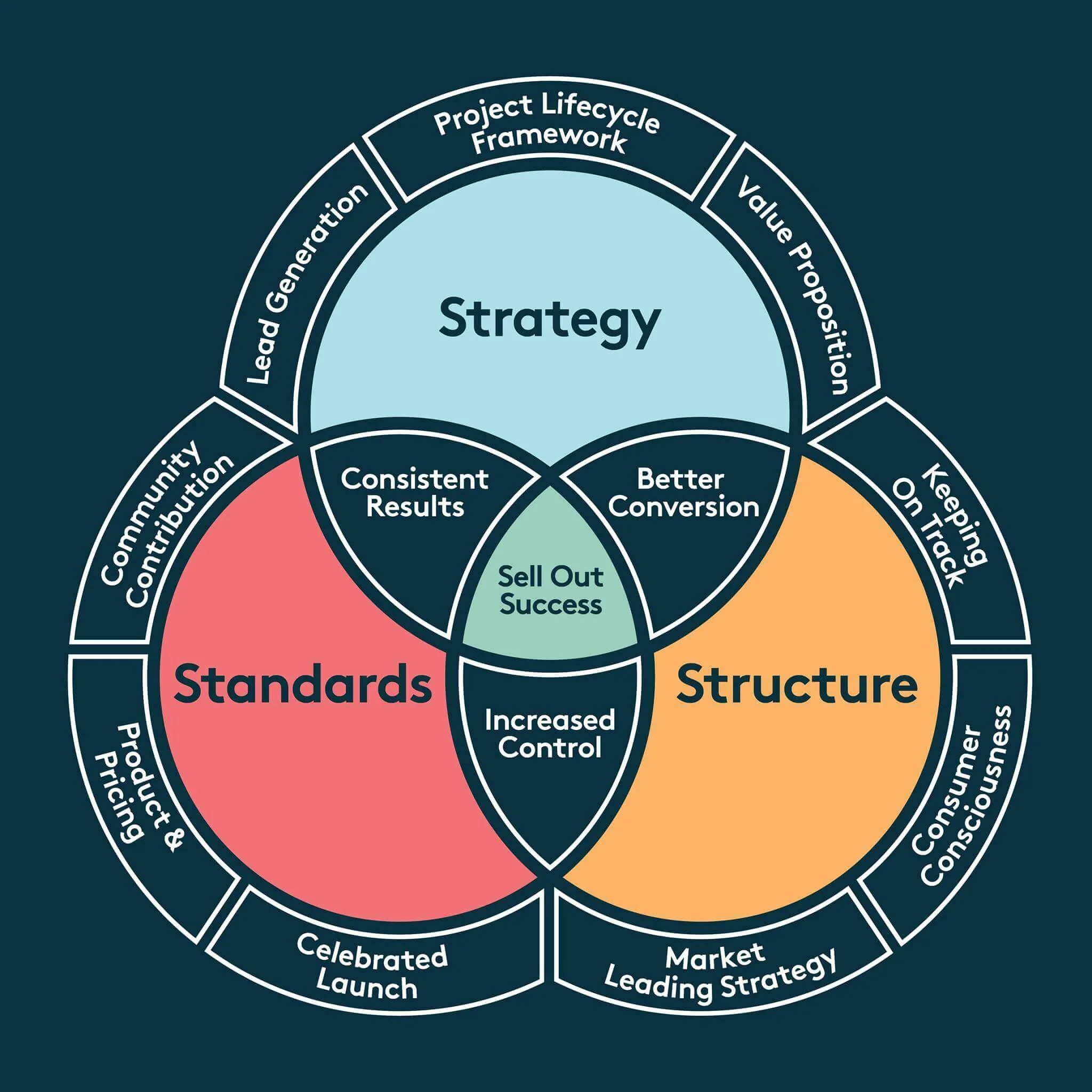The Genius Model: A Methodology to Set Your Project Up For Success
It all starts with the customer.
If your project is in the infancy of its brand development, there is an ideal opportunity to design and finesse the customer journey from the get-go.
Refining the customer journey will inform key decision making for the overall project and marketing strategy. This will help to reduce the cost of sale in the long-term and increase certainty in sales.
Property Republic has developed a model and methodology that, with input from the internal project team and external partners, will enhance the customer experience, engage prospects, purchasers and residents, and create a vibrant community – leaving a positive legacy for the developer’s brand.
At Property Republic, we take a holistic view of project marketing that creates consistent results, increased control and better conversion. Our approach dives deep into the strategy, standards and structure required to achieve sell out success.
We use nine ‘accelerators’ to develop the road map to this success. These accelerators have been developed by our Founder Judi Carr, a property sales and marketing sage with over 25 years’ experience.
We are certain that our measured approach will deliver more qualified leads to the sales team at a cheaper cost per conversion and anticipate that our methodology will upskill your project team every step of the way.
Our Nine Accelerators for Success
1. Value proposition
Understanding your value proposition allows your project team to align future decision making and initiatives with the core purpose of your project. This is where we conduct a workshop with your project team to define the Value Proposition.
In this workshop, we will identify the pains and gains of three customer segments you want to focus on. From here we will align them with what’s on offer at your project to truly identify the project’s value proposition.
2. Project lifecycle framework
Nurturing your leads through the project lifecycle helps attract a more qualified lead, at a cheaper cost per acquisition and conversion. Once your value proposition is defined per segment, the lifecycle plan is the most important approach to continual and steady success of the project. Our work in this area includes:
Developing the customer experience map per segment
Developing the content nurturing strategy per segment
Developing the range of presentations required such as builder, sales centre, Zoom, email, telephone, shopping centre
Identifying areas of digital execution and automation
Developing the sales follow-up plan
3. Lead generation
The Lead Generation Blueprint will provide your project with a range of tools for use throughout the life of the project. These include the following strategies:
Signage hierarchy (what signs with what messages are used where)
Builder engagement
Customer referral
Media buying
Events
4. Community contribution
A strategic approach to community development aligns community needs and project resources to produce tangible, sustainable benefits.
From a new development point of view, community development can be defined as the soft and hard infrastructure that creates a sustainable community. The Community Development Plan will explore the following elements:
Community brokerage
Build capacity
Linkages and networks
Partnerships
Physical form
5. Product and pricing
Larger residential communities sometimes present the opportunity to create precincts that allow for different product price points and aesthetics. The Precinct Strategy explores:
Strategic locations
Hard and soft landscaping treatments
Lot mix
Housing product design guidelines
Price point differentials
Sustainability initiatives
Access points
Relationship to nearby facilities
Timing
6. Celebrated launch
Planning a project launch involves the project team working towards a common goal and is not only the responsibility of the sales agency, but also the infrastructure providers, creative agency, landscape team – the entire project team. It’s essential to document expectations in a Launch Strategy and Plan.
7. Market leading strategy
After identifying the:
Value Proposition
Project Lifecycle Framework
Lead Generation Blueprint
Community Development Plan
Precinct Strategy
Launch Strategy and Plan
we document the marketing and sales strategy or, as we like to call it, the Game Plan. The Game Plan will bring all the information together and become the reference point for the project team.
8. Consumer consciousness
Having access to data and being able to interpret and analyse it for the ‘so what’s’ is an imperative part of making great marketing decisions.
Our experience tells us that every week within a project team, someone asks for an additional piece of data, which results in lengthy reports being created for one person’s pleasure, which eats up time and resources.
Agreeing upfront what needs to be reported, how often and for what purpose can save time and money and allow decision makers to make great sales and marketing decisions.
9. Keeping on track
It’s important to keep on track and continue the momentum gained by a successful sales launch. And within each development business, it’s vital to build capacity so that there is continuity in strategy and messaging. The Property Republic team checks in on a monthly basis for the first six months.
Want to discuss how we can use our Genius Model to propel your project towards success? Get in touch!

